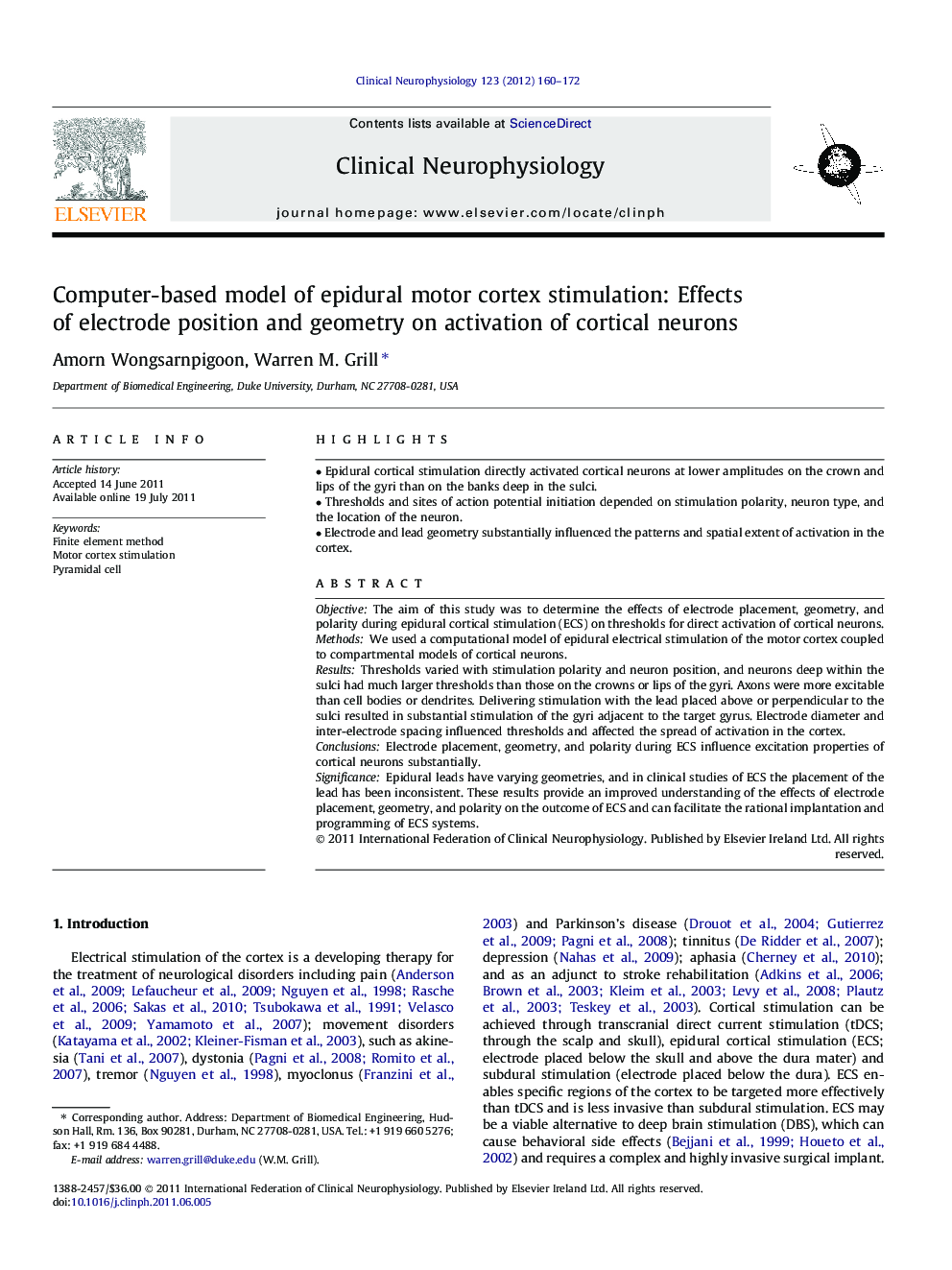| Article ID | Journal | Published Year | Pages | File Type |
|---|---|---|---|---|
| 3043844 | Clinical Neurophysiology | 2012 | 13 Pages |
ObjectiveThe aim of this study was to determine the effects of electrode placement, geometry, and polarity during epidural cortical stimulation (ECS) on thresholds for direct activation of cortical neurons.MethodsWe used a computational model of epidural electrical stimulation of the motor cortex coupled to compartmental models of cortical neurons.ResultsThresholds varied with stimulation polarity and neuron position, and neurons deep within the sulci had much larger thresholds than those on the crowns or lips of the gyri. Axons were more excitable than cell bodies or dendrites. Delivering stimulation with the lead placed above or perpendicular to the sulci resulted in substantial stimulation of the gyri adjacent to the target gyrus. Electrode diameter and inter-electrode spacing influenced thresholds and affected the spread of activation in the cortex.ConclusionsElectrode placement, geometry, and polarity during ECS influence excitation properties of cortical neurons substantially.SignificanceEpidural leads have varying geometries, and in clinical studies of ECS the placement of the lead has been inconsistent. These results provide an improved understanding of the effects of electrode placement, geometry, and polarity on the outcome of ECS and can facilitate the rational implantation and programming of ECS systems.
► Epidural cortical stimulation directly activated cortical neurons at lower amplitudes on the crown and lips of the gyri than on the banks deep in the sulci. ► Thresholds and sites of action potential initiation depended on stimulation polarity, neuron type, and the location of the neuron. ► Electrode and lead geometry substantially influenced the patterns and spatial extent of activation in the cortex.
